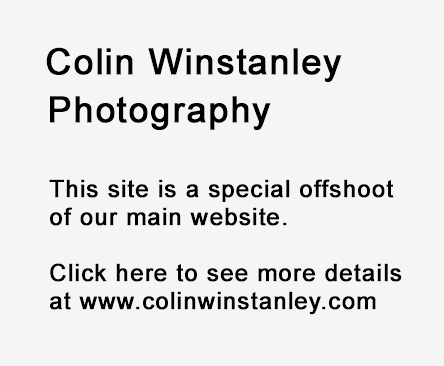Related Articles
- Selecting and Masking, Masking, HDR Photography, Masking, Blend If.
Introduction
- Luminosity is the same as brightness, and the ability to be able to limit an effect to a certain brightness range, such as shadows, mid tones or highlights, gives you a lot of control in your editing.
- Blend If is Photoshop's way of Luminosity Masking the effect of a single Layer.
- Luminosity Masks are Masks which limit an effect to a certain luminosity range, and can be created in several different ways.
Blend-If
- Blend If is Photoshop's way of Luminosity Masking for a Layer..
- Use a layer above the image, such as Curves. Right click this later and use Blend If to only affect the layer below by using the bottom sliders. You can target selected luminosity ranges. The big advantage is that you can go back and adjust the sliders at any time, something you cannot do with luminosity masks. The disadvantage is that there is no mask to use to select out areas you wish to protect. Similarly you can not copy a mask if you want to do further adjustments. 01,
- Luminosity Masks Versus Blend If,
- How to turn Blend if Selection into a Layer Mask for Further Tweaking - Video by Nemanja Sekulic.
Creating Luminosity Masks
- Luminosity Masks are created from Channels by selecting different luminance (Brightness) ranges by manipulating these. This is a tedious process and it is so much easier to use an Action your have created yourself or to use one of the commercially available Plugins.
- Using Select Colour Range, which can also be set to select luminosity. This allows you to select visually, rather than using set values. 01, 02.
- How to Create Luminosity Masks in Photoshop - Video by Jimmy McIntyre.
- The Hidden Power of Luminosity Masks in Photoshop CC - Video by Tutvid.
Plugins to Create Luminosity Masks
- NBP Lumizone by Nino Batista at £23.95.
- Lumenzia - Recommended and used by Pratik Nayak. $39.99.
Actions
- JM Luminance Masks (Downloaded) - Free panel to create luminosity masks at the click of a button by Jimmy MacIntyre. 01, Free Download Site,
- To Select and mask, go to Channels and chose the appropriate one. Turn on the eye symbol. Press CMD + CLICK on the thumbnail of the Channel Mask. Go back to the black mask on the image, making sure it is visible, and the marching ants will show on the mask. Use CTRL + H to hide it if needed. Brush over the mask in white to reveal the selected areas. 01,
Tutorials
- A Simple But Effective Way to Create Luminosity Masks in Photoshop - Video by PiXimperfect.
- You Don't Need Luminosity Masks in Photoshop Because... - Video by PiXimperfect.
- Post Processing Mastery - Luminosity Bundle $71.
- The Art of Digital Blending course $44.99 by Jimmy MacIntyre.
Relate Luminosity Masks from Gradient Maps
How to Make Quick Luminosity Masks from Gradient Maps - Video by Nino Batista. https://youtu.be/hMY-b5nBjM8
5 Tone Heat Map
- Simplified form of luminosity mask produced by using a tone map to produce five different colours in an image based on luminosity. However, the beauty of this method is that you can then use a selective colour layer to select any of the colours in the heat map and then use a curves adjustment to just alter the one luminosity (colour) range. (Ref). More notes needed.***
Luminosity Masking
- Luminosity Masks - 01,
Photographers Who Specialise in Luminosity Masking
- Blake Rudis with Zone System Express 4.0 at f64 Academy. $247. Facebook, Blend If Tutorials on YouTube, Also filed under Ps & Lr > Zone System, and Plugins
- Gavin Seim with Lumist.
- Jimmy McIntyre with Easy Panel 2.0 - 16 bit luminosity panel - YouTube,
- Steve Arnold with Luminosity Masking Panel. His YouTube Channel. Download his free PDF book An Introduction to Luminosity Masking for Landscape Photographers.
Lightroom
- There is a Luminosity Mask under Range Mask in the Brush, Graduated Filter and Radial Filter tools, which can apply the effects selectively.
Zone System
- To add.
Courses
- Courses - 01,

